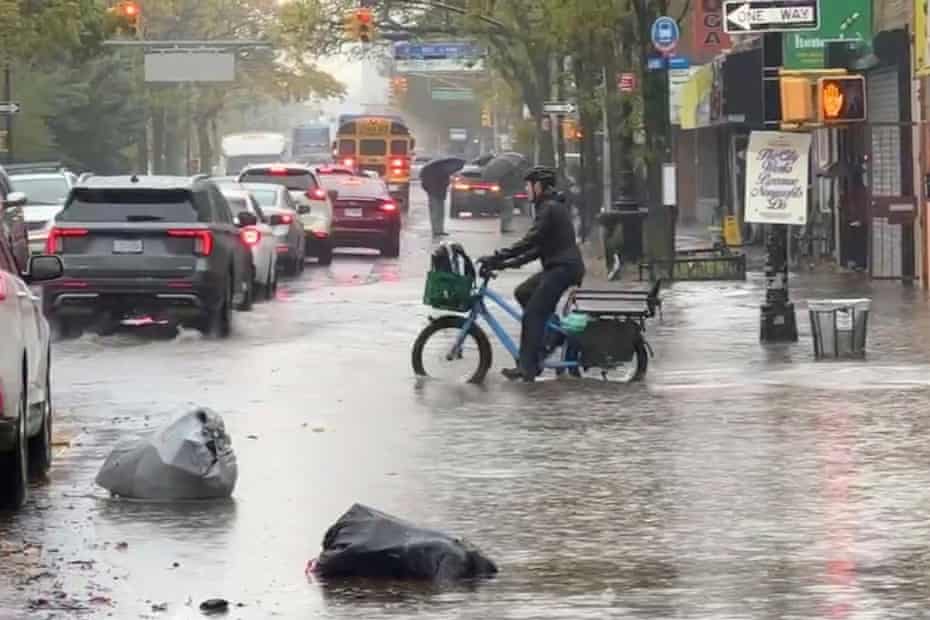Two men lost their lives in New York City on Thursday after torrential rainfall overwhelmed drainage systems, flooded streets, and left parts of the city paralysed. The storm, which brought record-breaking downpours to several boroughs, caused widespread disruption to transport and renewed concerns about the vulnerability of basement dwellings during extreme weather.
Emergency services were called to a townhouse in Brooklyn at approximately 4.30pm after reports of a man trapped in a flooded basement. A scuba team recovered the body of a 39-year-old, who was carried away by firefighters through water that had risen to calf height on the street outside. Hours later, in Manhattan, a 43-year-old man was discovered dead in the basement boiler room of an apartment building. Police confirmed the deaths but said the causes were still under investigation. The identities of the victims have not yet been released.
The storm brought hours of steady rainfall across the city, intensifying during the evening rush hour. According to preliminary figures from the National Weather Service, Central Park recorded 1.8 inches (4.57cm) of rain, surpassing the previous daily record of 1.64 inches (4.17cm) set in 1917. At LaGuardia Airport, 1.97 inches (5cm) fell, breaking a record that had stood since 1955.
The deluge left many streets submerged, with water rising to the bumpers of cars and pouring into underground stations. Images and videos shared on social media showed commuters wading through flooded concourses and vehicles stranded at intersections. In some neighbourhoods, clogged drains turned junctions into deep pools capable of floating cars, while nearby blocks were left with little more than surface puddles.
Mayor Eric Adams acknowledged the strain placed on the city’s infrastructure. Speaking to local radio station 1010 WINS, he said: “When you look at the amount of water that was coming down, our sewer systems are just not built to handle that. It was a steady rain, throughout.”
The storm also brought down tree limbs, damaging vehicles in several districts. While the flooding was described as highly localised, the impact was felt across all five boroughs, with delays reported at airports and on major roadways.
The tragedy has once again highlighted the dangers faced by residents of the city’s thousands of basement apartments. In September 2021, during the remnants of Hurricane Ida, 11 people drowned in such dwellings when floodwaters surged through doors and windows. Campaigners have since called for stricter safety measures and improved drainage systems, but Thursday’s events suggest that the risks remain acute.
New York’s ageing sewer network, much of it built in the 19th and early 20th centuries, is designed to cope with rainfall of up to 1.75 inches per hour. Climate experts warn that increasingly frequent extreme weather events, fuelled by global warming, are overwhelming these systems and will continue to do so unless major investment is made.



